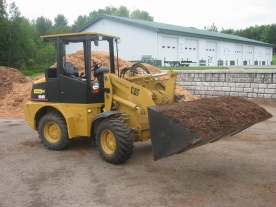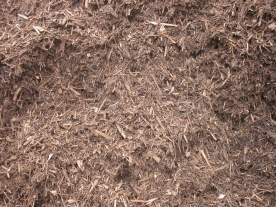Step 1 - Kill the weeds!
It is a good idea to spray all weeds with a weed killer 1 to 2 weeks prior to mulching. This will allow the weeds to completely die. Dead weeds are the best weeds to pull!
Step 2 - Trim your trees and shrubs
Because of the debris produced, we recommend that you trim your trees and shrubs prior to mulching.
Step 3 - Clean & Cultivate your beds
Clean out all dead leaves, weeds and trimmings with a rake. After your beds have been cleaned, cultivate any compacted soil or mulch. A roto-tiller or hand cultivator will do the job. Cultivating will allow moisture and air to pass through the mulch easier.
Step 4 - Edge your beds
Creating a clean edge really enhances your landscape and gives it a professional look. An edging shovel or power edger can be used to create your edge. Try using your garden hose as a guide to create nice flowing curves.
Step 5 - Rake Smooth
Using a stiff rake, such a as a mud rake, smooth out all the surfaces to be mulched.
Step 6 - Time to Mulch!
Using your hands or a rake, apply new mulch over the existing mulch or soil to your desired depth. When complete, water to moisturize mulch and settle it into place.
Mulch should be applied no more than 2 inches thick to provide a 1 to 1 1/2 inch blanket after settling. Building a volcano shape around a tree is an example of excessive mulching, and it will cause more harm than good. Mulch compacts after a few rains and causes a dry condition under the mulch; this dry condition then starves the soil and plants of air and water, promoting the growth of fungus and potentially causing disease in your plants. We recommend occasionally aerating or cultivating the mulch to reduce compaction.



What is mulch?
* Mulch is wood that is ground into small pieces
* Most commonly used for landscaping purposes
Do you sell "chips" or sawdust?
* No, only mulches
What kind of mulch do we offer?
* Hardwood mulch (single, double & triple ground)
* Pine Blend
* Cedar mulch (Northern Cedar)
Hardwood Mulch VS Cedar Mulch: What's the difference?
* Cedar mulch is stringy brown bark and tends to be very "woody", giving it a lighter appearance; Hardwood is ground into finer pieces and tends to be darker in appearance
* Cedar is resistant to decay; Hardwood decays much quicker providing nutrients to the soil
What is a cubic yard?
* One cubic yard is 3' x 3' x 3' for a total of 27 cubic feet.
* One cubic yard will fill 4 1/2 - 6 cubic foot capacity wheelbarrows.
* One cubic yard is equal to nine 3 cubic foot bags and covers approximately 100 square feet at 3 inches deep.
How much does 1 cubic yard of mulch weigh?
* Hardwood = 1 cubic yard weighs approx. 500 pounds
* Cedar = 1 cubic yard weighs approx. 250 pounds
What does ORGANIC mean?
* Organic simple means that it is all natural. There are no colorants or plywood's etc. added or ground into our mulch.
Is our mulch certified organic?
* No. There is currently no standard set by the Michigan Department of Agriculture to certify landscape mulch.
What is mulch used for?
* Most commonly used for decorative landscaping purposes
* In addition to its attractive appearance, our mulch helps retain water, prevent weeds, repel insects and control erosion
What is our mulch made from?
* Felled trees from surrounding areas are brought into our mill yard and de-barked; the tree bark and other wood scraps from our sawmill are collected for grinding
5151 Manthei Rd.
Petoskey, MI 49770